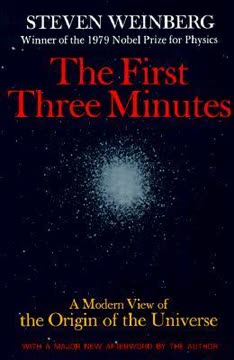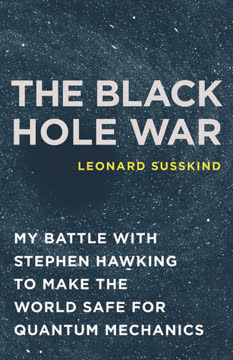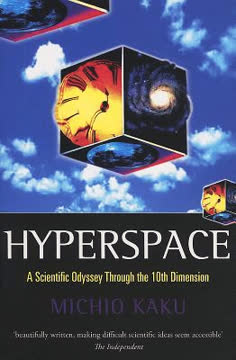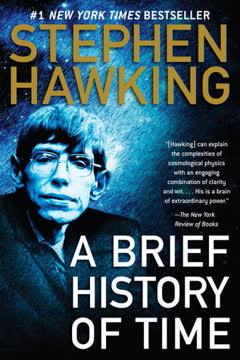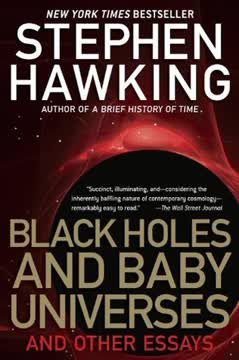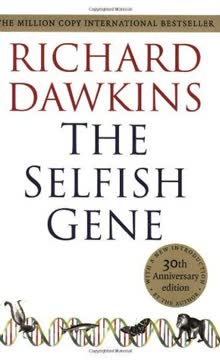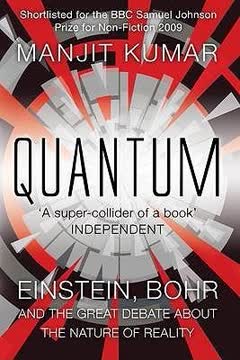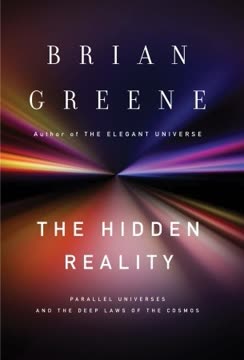نکات کلیدی
1. جهان میتواند از هیچ به وجود آید و مفاهیم سنتی خلقت را به چالش بکشد
هیچچیز همیشه چیزی تولید میکند، حتی اگر فقط برای یک لحظه باشد.
تعریف مجدد "هیچ": در فیزیک کوانتوم، فضای خالی واقعاً خالی نیست. این یک محیط پویا است که در آن ذرات و ضدذرات به طور خودجوش ظاهر و ناپدید میشوند. این موضوع مفهوم فلسفی "از هیچ، هیچ نمیآید" را به چالش میکشد.
خلقت بدون خالق: قوانین فیزیک اجازه میدهند که ماده، انرژی و حتی خود فضا-زمان به طور خودجوش ایجاد شوند. این امر نیازی به دخالت نیروی خارجی یا خدایی ندارد. بلکه نتیجه طبیعی مکانیک کوانتوم و نسبیت عام است.
- ذرات مجازی میتوانند از خلاء کوانتومی به وجود آیند
- انرژی کل یک جهان بسته میتواند صفر باشد و به طور خودجوش به وجود آید
- نظریه تورم توضیح میدهد که چگونه یک نوسان کوانتومی کوچک میتواند به جهان قابل مشاهده ما گسترش یابد
2. نوسانات کوانتومی و تورم منشأ و ساختار جهان ما را توضیح میدهند
نوسانات کوانتومی که در غیر این صورت کاملاً نامرئی بودند، توسط تورم منجمد میشوند و پس از آن به عنوان نوسانات چگالی ظاهر میشوند که همه چیزهایی را که میتوانیم ببینیم تولید میکنند!
گسترش کیهانی: نظریه تورم پیشنهاد میکند که جهان اولیه دورهای از گسترش نمایی را تجربه کرده است که توسط انرژی فضای خالی هدایت میشود. این موضوع چندین معمای کیهانی از جمله مسطح بودن و همگنی جهان قابل مشاهده را حل میکند.
بذرهای ساختار: نوسانات کوانتومی در طول تورم به بذرهای تمام ساختار کیهانی تبدیل شدند. این تغییرات میکروسکوپی در چگالی انرژی به مقیاسهای کیهانی کشیده شدند و در نهایت به تشکیل کهکشانها، ستارگان و سیارات منجر شدند.
- تورم توضیح میدهد که چرا جهان در مقیاسهای بزرگ مسطح و یکنواخت به نظر میرسد
- تابش زمینه کیهانی شواهدی برای این نوسانات اولیه فراهم میکند
- این نظریه دنیای کوانتومی را به ساختار بزرگمقیاس کیهان متصل میکند
3. انرژی تاریک بر جهان غالب است و گسترش آن را تسریع میکند
ما در زمانی بسیار خاص زندگی میکنیم... تنها زمانی که میتوانیم به طور مشاهدهای تأیید کنیم که در زمانی بسیار خاص زندگی میکنیم!
کشف غیرمنتظره: مشاهدات ابرنواخترهای دور در اواخر دهه 1990 نشان داد که گسترش جهان در حال تسریع است. این به کشف انرژی تاریک منجر شد، نیرویی مرموز که در مقیاسهای کیهانی با گرانش مقابله میکند.
ترکیب کیهانی: انرژی تاریک حدود 70 درصد از محتوای انرژی جهان را تشکیل میدهد، در حالی که ماده تاریک 25 درصد دیگر را تشکیل میدهد. ماده معمولی – چیزی که میتوانیم ببینیم و لمس کنیم – کمتر از 5 درصد کیهان را تشکیل میدهد.
- ماهیت انرژی تاریک یکی از بزرگترین معماهای فیزیک باقی مانده است
- کشف آن به طور بنیادی درک ما از گذشته و آینده جهان را تغییر داد
- ثابت کیهانی که توسط اینشتین پیشنهاد و سپس رها شد، ممکن است انرژی تاریک را توضیح دهد
4. جهان قابل مشاهده در آینده دور به دلیل گسترش شتابدار ناپدید خواهد شد
هیچچیزی در مسیر برخورد مستقیم به سمت ما حرکت میکند!
افقهای کیهانی: با گسترش جهان با نرخ شتابدار، کهکشانهای دور در نهایت نسبت به ما سریعتر از سرعت نور عقبنشینی خواهند کرد. این باعث میشود که آنها از دید ما ناپدید شوند و جهان قابل مشاهده ما به طور فزایندهای خالی شود.
پایان کیهانشناسی: در آینده دور، ستارهشناسان قادر نخواهند بود شواهدی از بیگ بنگ یا گسترش جهان را مشاهده کنند. تابش زمینه کیهانی بسیار ضعیف خواهد بود و تمام کهکشانهای خارج از گروه محلی ما فراتر از افق کیهانی ناپدید خواهند شد.
- در حدود 2 تریلیون سال، بیشتر جهان قابل مشاهده کنونی غیرقابل مشاهده خواهد شد
- تمدنهای آینده ممکن است تصویری نادرست از یک جهان ایستا و ابدی توسعه دهند
- این موضوع بر ماهیت ویژه دوره کنونی ما برای کشف کیهانی تأکید میکند
5. ممکن است جهانهای متعددی وجود داشته باشند که هر کدام قوانین فیزیک متفاوتی دارند
جهان ما شبیه به اشکی است که در اقیانوس وسیع چندجهانی از احتمالات دفن شده است.
فرضیه چندجهانی: نظریههای مختلف در فیزیک مدرن، از جمله نظریه ریسمان و تورم ابدی، وجود جهانهای متعدد را پیشنهاد میکنند. هر جهان در این "چندجهانی" میتواند ثابتهای بنیادی و قوانین فیزیک متفاوتی داشته باشد.
پیامدها برای تنظیم دقیق: تنظیم دقیق ظاهری جهان ما برای زندگی ممکن است با وجود تعداد زیادی از جهانها توضیح داده شود. در این سناریو، ما به طور طبیعی خود را در جهانی مییابیم که با وجود ما سازگار است، در حالی که بیشمار جهان دیگر غیرقابل سکونت باقی میمانند.
- نظریه ریسمان یک "چشمانداز" وسیع از جهانهای ممکن را پیشنهاد میکند
- تورم ابدی پیشنهاد میکند که جهانهای جدید به طور مداوم ایجاد میشوند
- مفهوم چندجهانی ایده یک کیهان منحصر به فرد و هدفمند طراحی شده را به چالش میکشد
6. اصل انساننگر پیشنهاد میکند که ویژگیهای جهان ما منحصر به فرد یا ضروری نیستند
اگر همه ما از غبار ستارهای هستیم، همانطور که نوشتهام، همچنین درست است که اگر تورم اتفاق افتاده باشد، همه ما به معنای واقعی کلمه از هیچ کوانتومی به وجود آمدهایم.
اثر انتخاب: اصل انساننگر استدلال میکند که ویژگیهای مشاهده شده جهان ما توسط نیازهای وجود ناظران مانند خودمان محدود شدهاند. این توضیح نمیدهد که چرا جهان به این شکل است، اما دامنه ویژگیهایی را که ممکن است مشاهده کنیم محدود میکند.
علم محیطی: در سناریوی چندجهانی، بسیاری از ثابتهای بنیادی طبیعت ممکن است تصادفات محیطی باشند نه ویژگیهای ضروری. این تمرکز را از توضیح اینکه چرا این ثابتها مقادیر خاصی دارند به درک توزیع احتمالی مقادیر مختلف در سراسر چندجهانی تغییر میدهد.
- تنظیم دقیق ثابتهای فیزیکی برای زندگی ممکن است یک اثر انتخاب مشاهدهای باشد
- این اصل وجود چندجهانی را اثبات نمیکند اما چارچوبی برای درک جایگاه ما در یکی از آنها فراهم میکند
- این ایده را به چالش میکشد که جهان به طور خاص برای وجود انسان طراحی شده است
7. علم، نه فلسفه یا الهیات، بهترین پاسخها را درباره وجود ما ارائه میدهد
داور نهایی این سوال از امید، تمایل، وحی یا فکر خالص نخواهد آمد. اگر بیاید، از کاوش در طبیعت خواهد آمد.
رویکرد تجربی: در حالی که استدلالهای فلسفی و الهیاتی درباره ماهیت وجود برای هزاران سال ادامه داشتهاند، تحقیق علمی پیشرفت چشمگیری در درک کیهان داشته است. این پیشرفت بر اساس شواهد مشاهدهای و نظریههای قابل آزمایش است.
محدودیتهای شهود: مفاهیم متداول ما درباره ماهیت واقعیت اغلب توسط کشفیات علمی نقض میشوند. دنیای کوانتومی و ماهیت فضا-زمان تجربیات روزمره ما را به چالش میکشند و نیازمند بهروزرسانی مفاهیم ما از "چیزی" و "هیچچیز" هستند.
- علم در فقط یک قرن درک ما از جهان را متحول کرده است
- استدلالهای فلسفی اغلب بر فرضیات قدیمی یا نادرست درباره طبیعت تکیه دارند
- روش علمی همچنان مرزهای دانش انسانی را گسترش میدهد
8. آینده جهان ممکن است بازگشت به هیچچیز باشد
"چرا چیزی به جای هیچچیز وجود دارد؟" سپس به سادگی خواهد بود: "برای مدت طولانی وجود نخواهد داشت."
چرخههای کیهانی: برخی نظریهها پیشنهاد میکنند که جهان ما ممکن است در نهایت به حالت "هیچچیز" بازگردد. این میتواند از طریق فروپاشی ماده، غلبه انرژی تاریک یا انتقال به حالت خلاء متفاوتی رخ دهد.
وجود موقت: وجود "چیزی" ممکن است یک حالت موقت در یک چرخه کیهانی بزرگتر باشد. این فرض ضمنی را به چالش میکشد که حالت کنونی جهان به نوعی خاص یا دائمی است.
- فروپاشی پروتون و مرگ حرارتی جهان ممکن است به حالتی از حداکثر آنتروپی منجر شود
- برخی مدلهای نظریه ریسمان پیشنهاد میکنند که جهان ما ناپایدار است و در نهایت فرو خواهد ریخت
- ماهیت گذرای جهان ما بر ارزشمندی وجود کنونی ما تأکید میکند
آخرین بهروزرسانی::
FAQ
What's "A Universe from Nothing" about?
- Exploration of Cosmology: The book delves into the current state of cosmology, exploring the origins and future of the universe.
- Concept of Nothingness: It examines the idea that the universe could arise from "nothing," challenging traditional philosophical and theological views.
- Scientific Advances: Krauss discusses groundbreaking scientific advances that have reshaped our understanding of the universe's beginnings.
- Interdisciplinary Approach: The book bridges the gap between science and popular culture, making complex ideas accessible to a broader audience.
Why should I read "A Universe from Nothing"?
- Understanding Cosmology: It provides a comprehensive introduction to modern cosmology and the scientific principles that govern the universe.
- Challenging Perspectives: The book challenges traditional notions of creation and existence, offering a scientific perspective on these age-old questions.
- Engaging Writing: Krauss's writing is known for its clarity and wit, making complex scientific concepts engaging and understandable.
- Cultural Relevance: The book addresses the intersection of science, philosophy, and religion, making it relevant to contemporary debates on these topics.
What are the key takeaways of "A Universe from Nothing"?
- Universe from Nothing: The universe can arise from nothing due to the laws of physics, particularly quantum mechanics and general relativity.
- Role of Dark Energy: Dark energy plays a crucial role in the universe's expansion and its eventual fate.
- Flat Universe: Observations suggest that the universe is flat, which has significant implications for its origin and evolution.
- Scientific Inquiry: The book emphasizes the importance of scientific inquiry and evidence-based understanding of the universe.
How does Lawrence Krauss explain the concept of "nothing" in the book?
- Quantum Fluctuations: Krauss explains that quantum fluctuations allow particles to appear and disappear, suggesting that "nothing" is unstable.
- Empty Space: He describes empty space as a dynamic entity with energy, challenging the traditional notion of "nothing."
- Cosmological Constant: The book discusses how the cosmological constant represents energy in empty space, contributing to the universe's expansion.
- Scientific Perspective: Krauss uses scientific principles to redefine "nothing," moving away from philosophical and theological definitions.
What is the significance of dark energy in "A Universe from Nothing"?
- Dominant Force: Dark energy is the dominant force driving the accelerated expansion of the universe.
- Cosmological Constant: It is often associated with the cosmological constant, a concept introduced by Einstein.
- Implications for the Universe: Dark energy's presence suggests that the universe will continue to expand, leading to a cold, dark future.
- Scientific Mystery: Despite its significance, dark energy remains one of the biggest mysteries in cosmology, with its nature and origin still largely unknown.
How does Krauss address the question of "something from nothing"?
- Scientific Explanation: Krauss argues that the universe can arise from nothing due to the laws of physics, particularly quantum mechanics.
- Inflation Theory: The book discusses how inflation theory explains the rapid expansion of the universe from a small, dense state.
- Quantum Mechanics: Quantum fluctuations allow for the spontaneous creation of particles, suggesting that "nothing" is inherently unstable.
- Challenging Traditional Views: Krauss challenges the philosophical and theological notion that creation requires a creator.
What role does the concept of a flat universe play in the book?
- Observational Evidence: Krauss presents evidence that the universe is flat, which has significant implications for its origin and evolution.
- Inflation Theory: A flat universe is consistent with the predictions of inflation theory, which describes the rapid expansion of the early universe.
- Energy Balance: In a flat universe, the total gravitational energy is zero, supporting the idea that the universe could arise from nothing.
- Scientific Consensus: The flatness of the universe is a key piece of evidence supporting the current cosmological model.
What are the best quotes from "A Universe from Nothing" and what do they mean?
- "Forget Jesus, the stars died so you could be born." This quote emphasizes the scientific perspective that our existence is a result of natural processes, not divine intervention.
- "The universe is the way it is, whether we like it or not." Krauss highlights the importance of accepting scientific evidence, even if it challenges our beliefs.
- "Nothing is not nothing. Nothing is something." This quote encapsulates the book's central theme that "nothing" is a dynamic and complex concept in physics.
- "We live at a very special time... the only time when we can observationally verify that we live at a very special time!" Krauss underscores the unique opportunity we have to study the universe's expansion and understand its origins.
How does Krauss use scientific principles to challenge traditional philosophical and theological views?
- Redefining Nothing: Krauss uses quantum mechanics and general relativity to redefine "nothing," moving away from traditional philosophical definitions.
- Evidence-Based Arguments: The book emphasizes the importance of evidence-based understanding, challenging the need for a creator in explaining the universe's origin.
- Scientific Inquiry: Krauss advocates for scientific inquiry as the best method for understanding the universe, rather than relying on philosophical or theological speculation.
- Interdisciplinary Approach: By bridging science and popular culture, Krauss makes complex scientific ideas accessible, encouraging readers to question traditional beliefs.
What is the role of quantum mechanics in "A Universe from Nothing"?
- Quantum Fluctuations: Quantum mechanics allows for the spontaneous creation of particles, suggesting that "nothing" is inherently unstable.
- Virtual Particles: The book discusses how virtual particles can appear and disappear in empty space, challenging traditional notions of "nothing."
- Inflation Theory: Quantum mechanics plays a crucial role in inflation theory, which describes the rapid expansion of the early universe.
- Scientific Explanation: Krauss uses quantum mechanics to provide a scientific explanation for the universe's origin, challenging philosophical and theological views.
How does "A Universe from Nothing" address the future of the universe?
- Dark Energy's Role: The book discusses how dark energy will continue to drive the universe's expansion, leading to a cold, dark future.
- Disappearance of Evidence: Krauss explains that in the distant future, evidence of the Big Bang and the universe's expansion will disappear, making it difficult for future civilizations to understand the universe's origins.
- Bleak Outlook: The book presents a bleak outlook for the universe's future, with galaxies receding beyond the observable horizon and stars eventually burning out.
- Scientific Perspective: Despite the bleak future, Krauss emphasizes the importance of understanding the universe's evolution through scientific inquiry.
What is the significance of the multiverse concept in "A Universe from Nothing"?
- Multiple Universes: The multiverse concept suggests that our universe is one of many, each with different physical laws and constants.
- Anthropic Principle: Krauss discusses how the multiverse concept supports the anthropic principle, which explains why our universe is suitable for life.
- Challenging Uniqueness: The multiverse challenges the idea that our universe is unique, suggesting that its properties may be the result of chance.
- Scientific Exploration: The book explores the multiverse as a scientific concept, encouraging readers to consider the broader implications for our understanding of the universe.
نقد و بررسی
کتاب جهانی از هیچ ایدههای جذابی دربارهی کیهانشناسی و منشأ جهان ارائه میدهد و توضیح میدهد که چگونه چیزی میتواند از هیچ به وجود آید. منتقدان سبک نوشتاری قابلفهم و توضیحات جذاب کراوس دربارهی مفاهیم پیچیده را تحسین میکنند. بسیاری کتاب را برانگیزانندهی تفکر یافتند، اگرچه برخی به موضع ضد مذهبی آن و گاهی عدم وضوح انتقاد کردند. خوانندگان از یادگیری دربارهی کشفیات و نظریههای علمی اخیر قدردانی کردند، اما برخی با جنبههای فنیتر کتاب دچار مشکل شدند. بهطور کلی، این کتاب بهعنوان یک بررسی آموزنده و جذاب از کیهانشناسی مدرن دیده میشود، با وجود کاستیهای گاهبهگاه.
Similar Books
